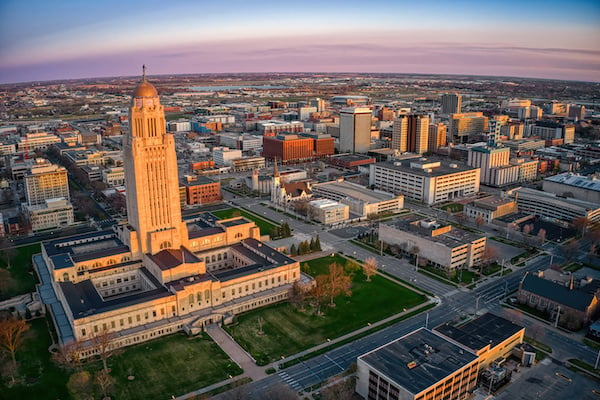Published on
The Importance of Applying Lifelong Learning Across the Institution

Many higher ed leaders want to apply lifelong learning to their institution but it’s often easier said than done. Understanding what goes into applying this model across the institution is critical to serving modern learners well. In this interview, Brian Amkraut discusses why leaders need to focus on lifelong learning, the challenges of expanding it institution-wide and what it takes to make it successful.
The EvoLLLution (Evo): Why is it important for higher ed leaders to focus on delivering a lifelong learning model?
Brian Amkraut (BA): In reality, while many higher ed institutions talk about lifelong learning, a precious few actually commit resources to this endeavor. Almost every university’s mission statement and values note the importance of lifelong learning. But at the end of the day, if you don’t fit education into the timelines traditionally offered, then it won’t get done—at least not at any noticeable scale.
There are two key reasons why this model is important. One, higher ed’s overall value proposition continues to be under threat, so demonstrating ongoing relevance is essential. Second, people are both living longer and changing careers more often. Having one job or two after high school isn’t going to cut it anymore. If you have interest in a different field, you’ll need to reskill for that. We have tremendous a breadth and depth of offerings within higher ed, and they shouldn’t be limited only to full-time or degree-seeking students. If we’re going out to the public, then we need to make our resources truly accessible to learners of all backgrounds and all ages.
Evo: What are some challenges that come with delivering a lifelong learning model?
BA: Any change is hard. And you’re talking about an entire industry that’s been built on the notion of traditional-aged students enrolling in a four-year experience. Retooling for true lifelong engagement is a tall order. Our Continuing Education colleagues think about this constantly, yet often they’re seen as the stepchild in the industry. If we can generate more money for the institution, then great. But CE and lifelong learning haven’t been viewed as core to the mission.
Along with financial pressure, leadership is recognizing the need to do a better job telling our story as an institution to reach more people. So, how do you engage students both right out of high school and throughout their lives? Not all alumni are well positioned to give back financially, but we as a college are able to give them continued service throughout their lives. Then when that opportunity arises down the road, 20 or 50 years later, they may be more inclined to support the institution through resource development.
By creating ongoing connections—as faculty, mentors or advisors, as well as Continuing Ed students—our graduates will continue to learn while giving back. We then create a virtuous cycle of helping one another throughout learners’ lifetimes. With that model, you’re building engagement for the institution’s lifetime as well. It’s a much more holistic view of what education needs to be moving forward.
Evo: How can partnerships across the institution help drive lifelong learning?
BA: Communication is important here. One reason we often get sidelined is because we don’t have opportunities to talk directly with full-time faculty, deans or senior administrators. Institutions whose CE units have elevated profiles are better positioned for those conversations, but the truth is anyone can do it. CE leaders need to explain who they are, listen to the traditional sides of the institution and understand what they’re looking for and create mutually beneficial relationships.
Our faculty is a great, smart resource to use in responding to the changes confronting higher ed. They understand the challenges, but they’re not typically engaged in thinking about the institution as a whole. In CE and lifelong learning, we’re often on the forefront of breaking down silos. Many people are hungry for it. We can create opportunities for faculty, staff and traditional students to take advantage of the additional resources we can make available. Having them engage with the community and think about the future of higher ed may be critical to navigating the uncharted territory we are in now.
Evo: What are some best practices to start building strong partnerships and maintaining them?
BA: The first meeting is often easy, but regular communication can slip through the cracks. It’s so important to be forthright when it comes to both strategy and tactics. There’s nothing like a little self-interest, whether engaging internal stakeholders or external partners. Finding ways to help both parties succeed in their missions and recognizing each other’s value are key elements and can go a long way. That ongoing communication can demonstrate the integral role true lifelong learning plays in the business of higher ed.
It’s not available to everyone, but a senior leadership who is vocal about lifelong learning can give you greater access to open doors, and people will take it more seriously. Time is never wasted with senior leadership and demonstrating the long-term interest for the institution, communities and companies we serve. It’s a valuable component that’s often overlooked. Getting presidents and provosts behind these initiatives trickles down to deans then to faculty, which makes those conversations easier and more sustainable.
Evo: What impact do partnerships have on the institution and its learners?
BA: We’re the entrepreneurial division of the institution. We have a leaner infrastructure, can start things up faster and foster and maintain connections on the outside. It’s another value proposition, not only to faculty and staff but also learners. We’re often more directly engaged with the employment sector than faculty.
To be relevant from a lifelong learning perspective, you need to know the skill sets in high demand. That engagement with industry stakeholders is critical. It’s valuable for students of all ages.
Evo: Is there anything you’d like to add about lifelong learning or Mercy College?
BA: Institutions like Mercy that serve first-gen students and are deeply embedded in communities can be at the forefront of Continuing Ed and lifelong learning. The number of prospective learners who have no college but some education is high. It’s an enormous market, not only from a revenue perspective but also in promoting employability. That generates more income and wealth for the communities that desperately need it. In our Workforce Credentialing and Community Impact division, I like to say we operate where the mission meets the market.
It’s an exciting time to be doing the work of Continuing Education, precisely because of the many challenges out there for higher ed to address. We have the opportunity to make a difference at scale. I encourage readers to make the case for our value to their leadership, who are hopefully willing to listen.
This interview was edited for length and clarity.
Author Perspective: Administrator



